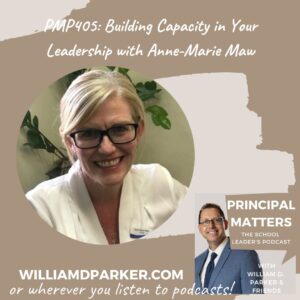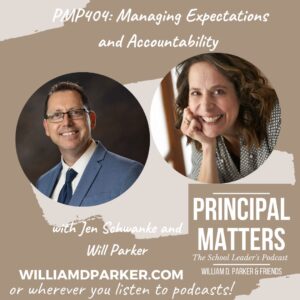Podcast: Play in new window | Download
This past weekend, NASA broadcasted the final transmission of the spacecraft, Cassini, as it plunged into the atmosphere of the planet Saturn that it had orbited and monitored for the past 13 years.

Cassini’s mission actually began in 1997. It took six years for it to reach Saturn, an its exploratory orbiting mission began. The spacecraft was originally slated to complete a 3-year mission of orbiting, but the technology proved to be so reliable that it remained working far beyond original plans. From 900 million miles away, this spacecraft took over 400,000 photos as well as transmitted data back to Earth about Saturn’s moons, rings, and atmosphere. The end of Cassini is also another hallmark moment for what amazing feats can be accomplished through human engineering, science, technology, and teamwork.
As I listened to interviews with NASA scientists, I was struck by the overwhelming sense of purpose and wonder they felt in being a part of making history. It was impressive to hear the stories of these dedicated teammates who have worked together for two decades to accomplish the impossible. For most of us, twenty years is a major time commitment. And I’m sure that even with the galactic implications of their work, these scientists and engineers sometimes found some of their tasks tedious, complicated, and sometimes mundane.
The work we do in school leadership may seem vastly different than space travel, but as you look at the way you are serving schools, do you ever ask yourself how you maintain perspective to stay focused through the harder, more challenging parts of the tasks involved in leading a school community? Most principals I talk to relate how difficult it can be to manage the multiple demands, the problem solving, or the conflict resolution that can sometimes feel almost overwhelming. At other times, the work can be amazingly fulfilling. How do we learn to find contentment and joy in our work whether it is a season of challenges or a season of achievement?
How Do You Find Meaning?
The other day I heard a great TedTalk presentation by Emily Esfahani Smith, called There’s more to life than being happy. As young college graduate and successful psychologist, Smith explained a crisis she faced soon after beginning her new career. In many ways, she was achieving the American dream, but she found herself constantly fighting a sense of frustration and lack of fulfillment. As a psychologist, she decided to find out why. So, she began interviewing hundreds of people to explore what traits were common among people who seem truly fulfilled.
The results are published in her new book, The Power of Meaning: Finding Fulfillment in a World Obsessed with Happiness.
4 Common Traits Found in People with Strong Meaning
Smith said she discovered four common traits in people who have a strong sense of meaning in their lives:
1. Belonging
People who have a strong sense of meaning feel intrinsically valued and loved by others. Knowing that you are loved by someone else and that they choose to love you changes the way you interact with others. Having a strong bond with others gives people a deep foundation for leading and serving those around them.
2. Purpose
Without something worthwhile to do, people flounder. Smith interviewed a hospital custodian who said her purpose was healing sick people. People who have a deep sense of the purpose in the work, families, or activities find those tasks more rewarding than those simply trying to earn money or achievement.
3. Transcendence
People are more fulfilled with they feel connected to something of higher value. Whether this is a spiritual experience or existential, Smith believes you are brought outside yourself by experiences that take you to a place of beauty—whether that is art, worship, curiosity, or writing.
4. Storytelling
The story you tell yourself and others about your life is important. When people see their lives as a narrative, they better understand their experiences. Also, when you find the redemptive themes in your own story, your story is motivation for taking positive steps going forward.
4 Questions for Those Leading Schools
As school leaders, think about these questions in regards to your school or team:
1.How do you help cultivate a community of “belonging” where students, teachers, parents, and coworkers feel accepted, valued, included and celebrated?
For principals, this includes being present and visible. It means greeting students in the mornings, walking through classes and encouraging students while they learn, or spreading good news of student accomplishments so everyone can celebrate together.
2. How do you communicate the main “purpose” of your school through the communications you have with your stakeholders?
Yes, you will always have more to manage than you have time to accomplish. But as you go through the steps of walkthroughs, observations, meetings, or crisis management, how can you still look for ways to see the good work of students or teachers? Remind yourself of the mission of your school so that you stay connected to what really matters and what students really need.
3. How are you capturing and communicating moments of awe, wonder, beauty or success that can inspire and encourage others?
Mindset is often the hardest part. But if you adopt a framework for being in the moment, you can often grasp these “transcendent” moments as reminders of why education is so important. As you do walkthroughs for instance, take time to look into the faces of your students and teachers. Don’t just look for common traits of a well-managed lesson; look for light-bulb moments.
4. What ways is your school participating in improving the lives of others, and how can you convey the redemptive “stories” happening among your school community?
So often you are managing the most difficult moments of school. Yes, sometimes you don’t have the pleasure of seeing a redemptive ending in the lives of all your students. But when we do, hold on to those moments and remind yourself of the bigger picture.
A Redeeming Moment with a Student
Let me try to give an illustration. I once had a student ask me if she could transfer out of Trigonometry because she felt she was floundering. It was way too far into the semester to change classes, but I was worried because I knew she had taken an advanced math to challenge herself. But now she felt she was over her head. I also knew this student’s story. I had known her since she was a freshman and had watched her transition from an at-risk student to a successful high school junior. I didn’t want to see her fail.
When I probed further, however, I realized her definition of failure was making a B. She had a solid B in Trig. When I realized how well she was really doing in the class, I stopped and said, “Wait a minute. Are you telling me you’re stressed out because you’re making a B?” “Yes,” she replied. “You are a rock-star!” I exclaimed. And then I could the expression of relief on her face followed by a smile. Before long we were giving each other high fives as we celebrated how far she had come in her learning and how proud she should be of working through the struggle of a hard class to earn such a strong grade. Seeing the expression of relief on her face and helping her realize she could accomplish the work was encouraging for the both of us.
Let’s Wrap This Up
This week I have been imagining how people could collaborate around something as impossible as sending a spacecraft to orbit Saturn. And I listened to NASA scientists being interviewed about their twenty-year journey, it was obvious their work included strong teamwork, a sense of purpose, moments of transcendence, and a compelling narrative. All these parts played a role in making their jobs more than just work — they were also making history.
You may not see your school highlighted in the news this week, but let me encourage you to remember that your work matters. Value the sense of community you are building. Remind yourself of the mission you have in creating atmospheres for learning. Look for and relish the moments of satisfaction and awe when students are learning. And then remember these redemptive stories are worth telling.
Don’t forget that you are a part of mission worth accomplishing.
Now It’s Your Turn
Can you identify ways Emily Smith’s four takeaways are present in your school? What’s one step you can take today to help cultivate a culture of belonging, to promote a sense of purpose, to discover moments of wonder, and to share stories of accomplishment or success with others?
Sign-Up For Free Updates and Ebook
When you enter your email address below, you will automatically receive my newest posts and a free Ebook, 8 Hats: Essential Roles for School Leaders. Let’s keep learning together!
Subscribe for free weekly updates and receive free e-book!
(function($) {window.fnames = new Array(); window.ftypes = new Array();fnames[0]=’EMAIL’;ftypes[0]=’email’;fnames[1]=’FNAME’;ftypes[1]=’text’;fnames[2]=’LNAME’;ftypes[2]=’text’;}(jQuery));var $mcj = jQuery.noConflict(true);
Principal Matters–The Book!

School leaders are very busy, so each of the twenty-four chapters is designed as a quick-read and followed with take-action questions for follow-up or reflection. If you want practical ideas on understanding your purpose, managing school teams, dealing with challenges, and leading with courage, action, motivation, and teamwork, go HERE to pick up a copy for you or your team.
Messaging Matters

Harness the power of messaging to create a culture of acknowledgment, respect, and celebration. Written specially for leaders, this title is divided into three parts, helping readers to maximize their role as chief communicators with students, teachers, and parents and community. Each chapter includes suggestions for using digital tools to enhance messaging and ends with reflection questions and practical next steps.


